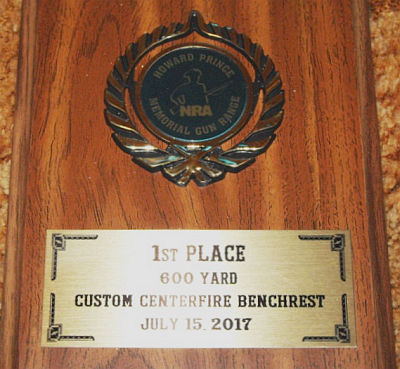My Shooting — New FREE Group Measuring Android App
Want to instantly measure your shot groups with precision, just by using your smartphone? You can do this with the excellent, proven Ballistic-X program, which has versions for both Android and Apple (iOS) devices. Ballistic-X is handy, relatively precise, and easy to use. But it does cost $7.99.
If you want to try a group measuring App that is completely FREE, there is a good new Android App called My Shooting from Bokili Production software. This new My Shooting App was created by a match shooter in Europe. It actually offers some cool features not available with most other group-measuring Apps. For example you can measure and display MULTIPLE group sizes on the same screen and keep them all in one file so you can quickly compare group size. There is a radius value in addition to group size (center to center of farthest shots). The App also includes an INFO box where you can display rifle type, sights/optics, ammo caliber, target distance, date, and even wind values and temperature. That’s handy.
FREE APP — You can download My Shooting App from the Google Play Store for FREE. Sorry there is NO Apple iOS/iPhone version at this time.
My Shooting lets you take images and perform all measurements internally within the application. To use the My Shooting App, simply take a photo of the target(s) with your smartphone. Then enter a known dimension on the target (such as the diameter of 10 Ring). Next click a circle on each shot-hole, and then mark the aiming point on the target. The App then does all the calculations, listing the group size in inches or mm (as you prefer). The App also list the Radius of the group, and the group’s Point of Impact (POI) separation from the Point of Aim.*
NOTE: If you enter bullet caliber and target distance, My Shooting App will display the angular measurement in MOA or Milliradians. That can be VERY handy when shooting at long ranges. The “smart” App shows the group’s actual dimension PLUS the equivalent MOA or Mils at your shooting distance. The App lets you choose either imperial (inches/yards) or metric measurements (millimeters/meters).
Bojan Radović, the creator of My Shooting App, is a shooter himself and an AccurateShooter.com visitor. He told us: “I am a shooter and a programmer from Europe. I recently created an Android App that works very precisely to measure a group of hits. The application is free!” NOTE, however, like most free Apps, the My Shooting App does contain small advertisements.
* POI (indicated with “X”) is precisely calculated as the mean value of all hits in relation to the center of the target — i.e. the mean distance from Point of Aim. The POI location reference (e.g. “down-left”) states a directional angle for which you can make a correction on your optical sight. POI displays with an actual distance (mm or inches) and the equivalent MOA or MRAD.





















 Competition Test Success — Golden Eagle Delivers a Win
Competition Test Success — Golden Eagle Delivers a Win






